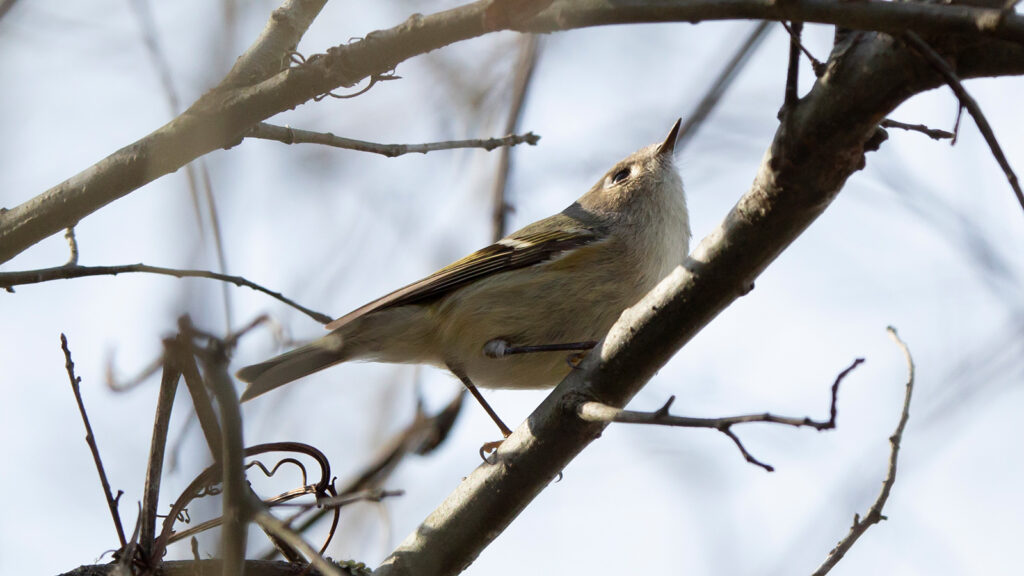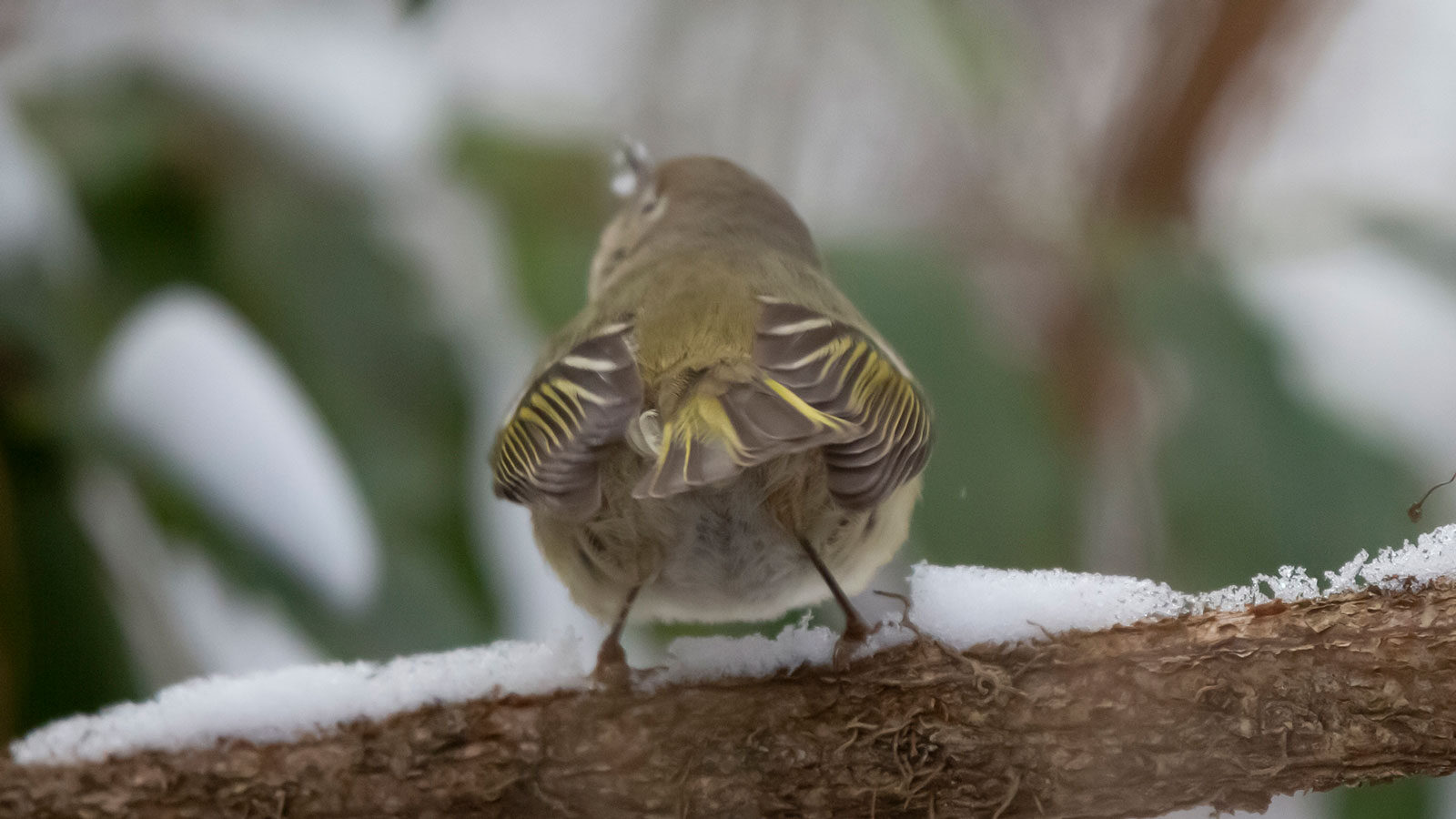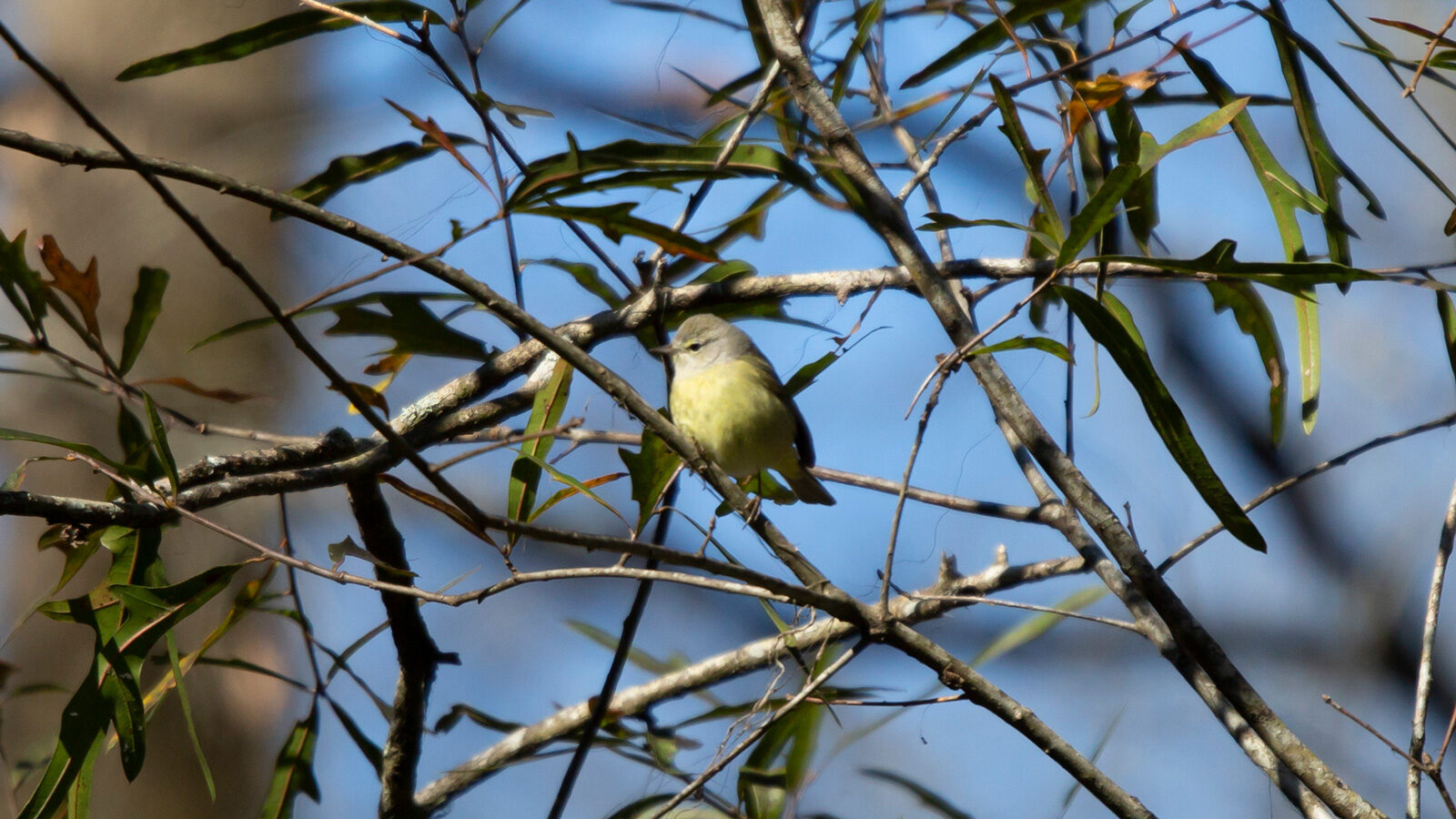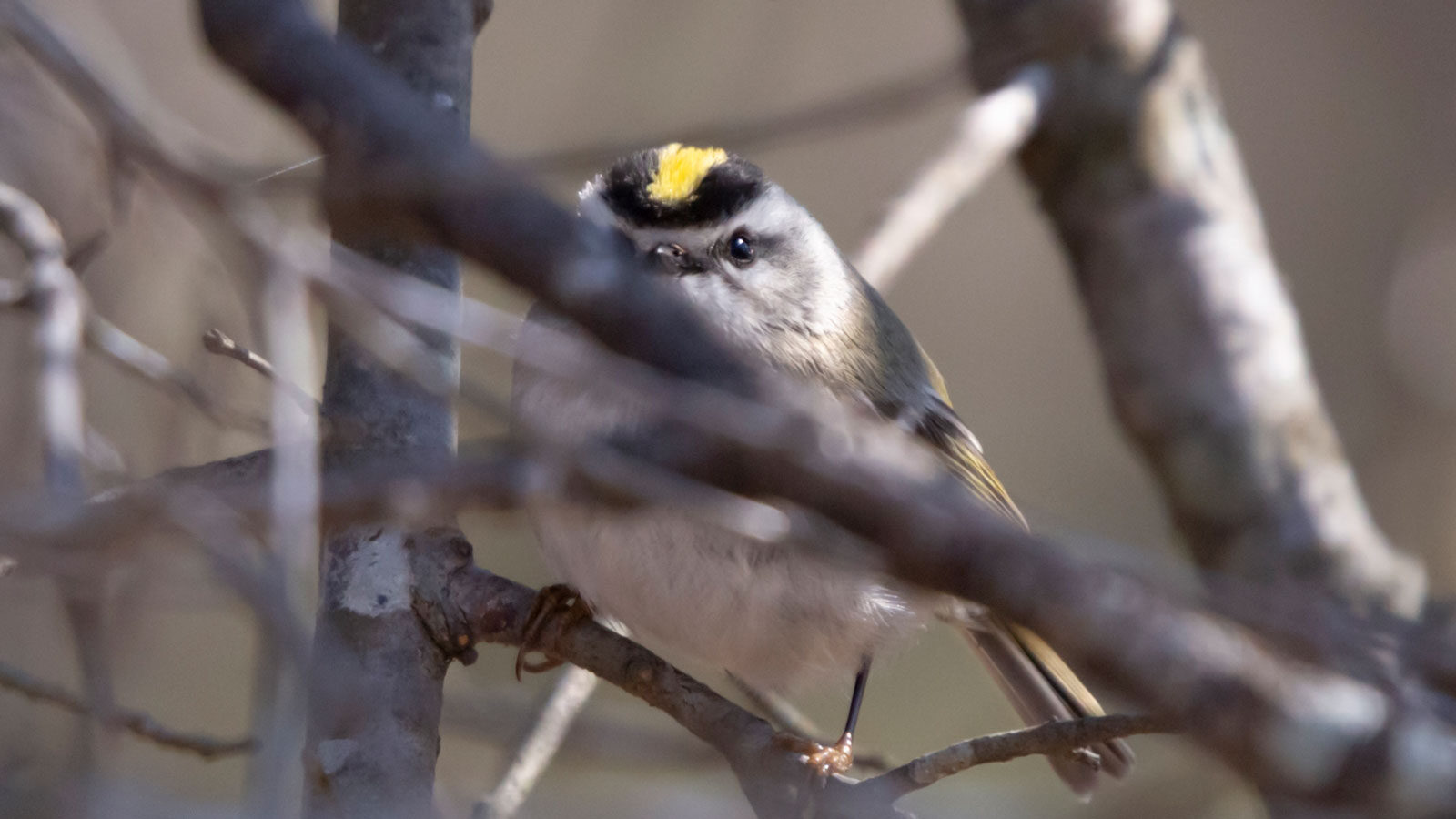
Did you know that female ruby-crowned kinglets can lay clutches of eggs that weigh the same as they do?
Ruby-Crowned Kinglets
at
a Glance

Key Features:
Ruby-crowned kinglets are tiny olive birds with white line on their wings. Males have red crowns. Females do not have red crowns.
Least Concern - Population Increasing
Habitat:
Forests
nesting habits:
Ruby-crowned kinglets build globe-shaped nests in trees out of cocoon silk, feathers, fur, grass, moss, and spiderwebs.
seasons ruby-crowned kinglets are active in our area:
Spring, winter
Diet:
Seeds, fruit, insects, sap, and spiders
hunting Behavior:
Ruby-crowned kinglets pick food from foliage.
Commonly Confused With:
Golden-Crowned Kinglets and Orange-Crowned Warblers
Ruby-crowned kinglets are often confused with golden-crowned kinglets because both are tiny birds with gray and olive coloration. Ruby-crowned kinglets lack the black and white stripes on their faces that golden-crowned kinglets have. Male ruby-crowned kinglets have red on their heads. Female ruby-crowned kinglets do not have a patch on their heads.

Ruby-crowned kinglets are often confused with orange-crowned warblers because both are small, olive birds with brightly colored crowns. Ruby-crowned kinglets are smaller with red crowns. Orange-crowned warblers have orange crowns.
